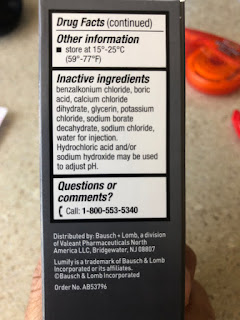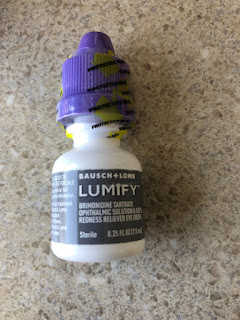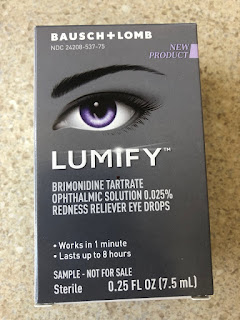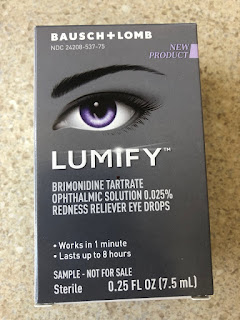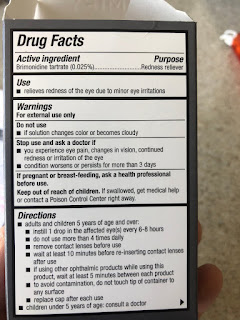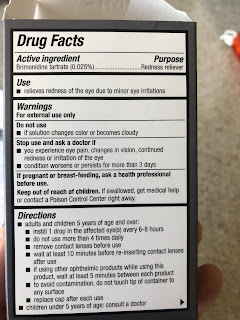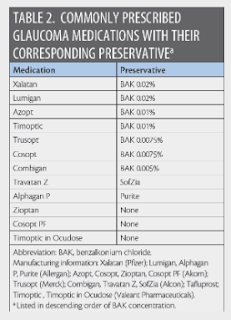|
2. Kastelan S, Tomic M, Metez Soldo K, et al. How ocular surface disease impacts the glaucoma treatment outcome. Biomed Res Int. 2013;2013:696328.
3. Baudouin C, Riancho L, Warnet JM, et al. In vitro studies of antiglaucomatous prostaglandin analogues: travoprost with and without benzalkonium chloride and preserved latanoprost. Investig Ophthalmol Vis Sci. 2007;48:4123-4128. Find Full Text Bibliographic Links [Context Link]
|
4. Bhagat P, Sodimalla K, Paul C, et al. Efficacy and safety of benzalkonium chloride-free fixed-dose combination of latanoprost and timolol in patients with open-angle glaucoma or ocular hypertension. Clin Ophthalmol. 2014;8:1241-1252. Find Full Text [Context Link]
|
5. European Medicines Agency. EMEA public statement on antimicrobial preservatives in ophthalmic preparations for human use. Doc. Ref.: EMEA/622721/2009. Available at:http://www.ema.europa.eu/docs/en_GB/document_library/Public_statement/2009/12/WC500017608.pdf
6.Steven DW, Alaghband P, Lim KS. Br J Ophthalmol Epub ahead of print: 2018 May 12. doi:10.1136/ bjophthalmol-2017-311544
7.
Exp Eye Res. 2018 May;170:188-197. doi: 10.1016/j.exer.2018.02.020. Epub 2018 Feb 24.
Toxicity of cosmetic preservatives on human ocular surface and adnexal cells.
Abstract
Cosmetic products, such as mascara, eye shadow, eyeliner and eye makeup remover are used extensively to highlight the eyes or clean the eyelids, and typically contain preservatives to prevent microbial growth. These preservatives include benzalkonium chloride (BAK) and formaldehyde (FA)-releasing preservatives. We hypothesize that these preservatives, at concentrations (BAK = 1 mg/ml; FA = 0.74 mg/ml) approved for consumer use, are toxic to human ocular surface and adnexal cells. Accordingly, we tested the influence of BAK and FA on the morphology, survival, and proliferation and signaling ability of immortalized human meibomian gland (iHMGECs), corneal (iHCECs) and conjunctival (iHConjECs) epithelial cells. iHMGECs, iHCECs and iHConjECs were cultured with different concentrations of BAK (5 μg/ml to 0.005 μg/ml) or FA (1 mg/ml to 1 μg/ml) under basal, proliferating or differentiating conditions up to 7 days. We used low BAK levels, because we found that 0.5 mg/ml and 50 μg/ml BAK killed iHMGECs within 1 day after a 15 min exposure. Experimental procedures included analyses of cell appearance, cell number, and neutral lipid content (LipidTox), lysosome accumulation (LysoTracker) and AKT signaling in all 3 cell types. Our results demonstrate that BAK and FA cause dose-dependent changes in the morphology, survival, proliferation and AKT signaling of iHMGECs, iHCECs and iHConjECs. Many of the concentrations tested induced cell atrophy, poor adherence, decreased proliferation and death, after 5 days of exposure. Cellular signaling, as indicated by AKT phosphorylation after 15 (FA) or 30 (BAK) minutes of treatment, was also reduced in a dose-dependent fashion in all 3 cell types, irrespective of whether cells had been cultured under proliferating or differentiating conditions. Our results support our hypothesis and demonstrate that the cosmetic preservatives, BAK and FA, exert many toxic effects on cells of the ocular surface and adnexa.
Toxicity of cosmetic preservatives on human ocular surface and adnexal cells
Highlights
- •
-
We hypothesize that BAK and FA at concentrations approved for consumer use, are toxic to human ocular cells.
- •
-
We measured the impact of BAK and FA on the morphology, survival, and proliferation and signaling of human ocular cell lines.
- •
-
Our results demonstrate that the cosmetic preservatives, BAK and FA, exert many toxic effects on human ocular cells.
Abstract
Cosmetic products, such as mascara, eye shadow, eyeliner and eye makeup remover are used extensively to highlight the eyes or clean the eyelids, and typically contain preservatives to prevent microbial growth. These preservatives include benzalkonium chloride (BAK) and formaldehyde (FA)-releasing preservatives. We hypothesize that these preservatives, at concentrations (BAK = 1 mg/ml; FA = 0.74 mg/ml) approved for consumer use, are toxic to human ocular surface and adnexal cells. Accordingly, we tested the influence of BAK and FA on the morphology, survival, and proliferation and signaling ability of immortalized human meibomian gland (iHMGECs), corneal (iHCECs) and conjunctival (iHConjECs) epithelial cells. iHMGECs, iHCECs and iHConjECs were cultured with different concentrations of BAK (5 μg/ml to 0.005 μg/ml) or FA (1 mg/ml to 1 μg/ml) under basal, proliferating or differentiating conditions up to 7 days. We used low BAK levels, because we found that 0.5 mg/ml and 50 μg/ml BAK killed iHMGECs within 1 day after a 15 min exposure. Experimental procedures included analyses of cell appearance, cell number, and neutral lipid content (LipidTox), lysosome accumulation (LysoTracker) and AKT signaling in all 3 cell types. Our results demonstrate that BAK and FA cause dose-dependent changes in the morphology, survival, proliferation and AKT signaling of iHMGECs, iHCECs and iHConjECs. Many of the concentrations tested induced cell atrophy, poor adherence, decreased proliferation and death, after 5 days of exposure. Cellular signaling, as indicated by AKT phosphorylation after 15 (FA) or 30 (BAK) minutes of treatment, was also reduced in a dose-dependent fashion in all 3 cell types, irrespective of whether cells had been cultured under proliferating or differentiating conditions. Our results support our hypothesis and demonstrate that the cosmetic preservatives, BAK and FA, exert many toxic effects on cells of the ocular surface and adnexa.
|
|
